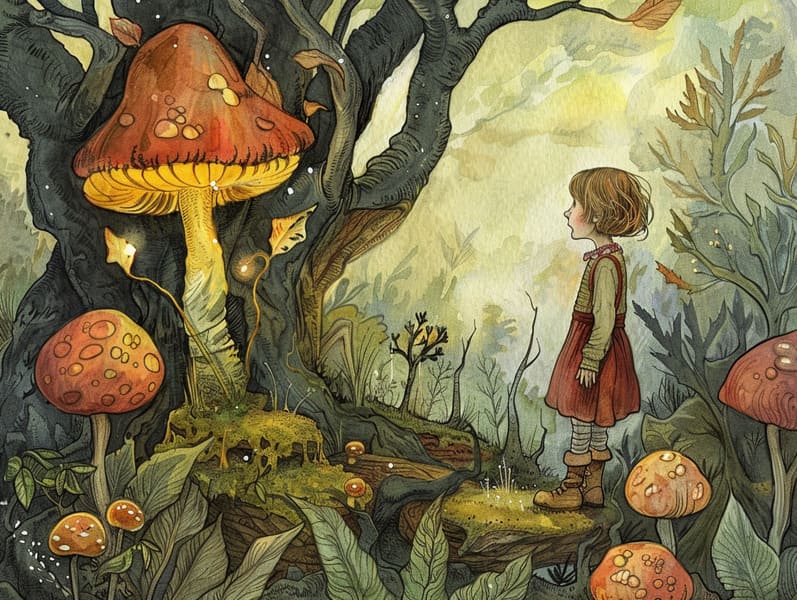The Beginning of Classic Fairy Tales with Its Lasting Magic.
The Beginning of Classic Fairy Tales with Its Lasting Magic.
Blog Article

Fairy tales have enduring presence. These stories have been relayed from one generation to the next ages before they were ever transcribed. They emerged from a variety of civilizations, including Middle Eastern traditions. They were initially conveyed among mature audiences, often carrying themes and messages reflective of the societal norms and beliefs of the time.
The famous Grimm duo, Jacob and Wilhelm Grimm, were among the first to compile and release many of these beloved stories. Their published works, "Grimm's Children's Stories," included narratives like "The Little Glass Slipper," "The Story of Hansel and Gretel," and "Little Snow White," which have since become cornerstones in the world of timeless fairy tales. Similarly, the Danish author's delightful narratives, such as "The Little Mermaid," and "The Story of the Ugly Duckling," have won hearts worldwide, cementing their place in the pantheon of timeless fairy tales.
Though they are old, classic fairy tales remain as relevant as ever, especially as kids' bedtime tales. These fantastical tales are now available in various formats, including colorful picture books, charming animations, and internet fairy tales.
Their ongoing significance can be connected to several fascinating points:
Ethical Lessons: Timeless fairy tales often whisper important moral lessons. Narratives like "The Shepherd Boy and the Wolf" teach the value of honesty, while "The Tale of the Tortoise and the Hare" emphasize the merits of resolve and humbleness. These stories offer kids clear distinctions between moral and immoral, shaping their moral compass in a subtle yet important way.
Compassion and Insight: Ancient fairy tales frequently feature personalities facing trials and tribulations, stimulating young listeners to empathize with their struggles and champion their triumphs. For instance, "The Story of Beauty and the Beast" shows us the merit of seeing inner beauty to realize the true essence of a individual, building sympathy and appreciation.
Cultural Recognition: Many fairy tales are rooted in the cultural contexts from which they emerged. Discovering these tales can provide captivating looks into different backgrounds, advancing a sense of global appreciation and discernment.
Fantasy and Innovation: The supernatural elements in classic fairy tales—wizardry and magic—enliven children’s imaginations. These stories take readers to magical realms, enlivening inventive dreams and a sense of enchantment that lasts a lifetime.
Ancient fairy tales are not only charming but also illuminating. They serve as magical tools in enhancing various cognitive and emotional skills in kids. When ancient fairy tales are read aloud, they cultivate communication skills by showing new terms and meanings and complex sentence structures. This practice also promotes auditory perception and attention, as young readers hang on every word, keen to see what happens next.
Furthermore, analyzing the themes and characters of fairy tales can improve critical thinking and cognitive skills. Children are guided to detect patterns, make predictions, and know cause and effect. These analyses also aid the young express their thoughts and feelings, boosting their emotional intelligence.
In today’s technological age, the accessibility of online fairy tales has made these stories more within reach than ever. Internet resources and software present ample collections of popular fairy tales that can be read or heard anytime, anywhere. Fairy tales voiced are particularly sought after, featuring an immersive method for children to be a part of these entrancing tales. Read-aloud books and read-out-loud videos bring characters and settings to life, often joined by captivating sound effects and instrumentals that enhance the tale-telling adventure.
The persistent attraction of timeless fairy tales lies in their ability to modify to present eras while preserving their main lessons. Contemporary modernizations of these tales often spotlight more different figures and modern settings, making them meaningful to today’s audience. However, the main ideas of heroism, goodness, and justness remain unchanged, continuing to move listeners of all ages.
Classic fairy tales also offer best fairy tales to read online a sense of calm and knownness. They make available a well-ordered narrative with a recognizable beginning, middle, and end, often winding up with the conclusion of conflicts and the triumph of virtue over wickedness. This constancy can be solacing for young ones, imparting a sense of stability in an unpredictable world.
Old fairy tales continue to captivate and guide new generations, maintaining their attraction and applicability in modern society. As nighttime stories for kids, they deliver a perfect blend of captivation and insight, nurturing moral values, empathy, and creativity. The proliferation of digital fairy tales and the in demand status of fairy tales spoken ratify that these traditional fairy tales remain attainable to new generations.
By retaining and releasing these narratives, we continue to laud the rich tapestry of fables and cultural heritage. Whether you are exploring a artistically illustrated book, discovering a digital library, or hearing an narrated book, the spell of popular fairy tales is always within reach. These tales illustrate of the continued force of tales and its ability to hold us together across generations and cultures.
Regardless if you are exploring a vividly illustrated book, browsing a web collection, or listening through an voice book, the spell of famous fairy tales is always within reach.
These narratives emphasize of the ageless force of stories and its ability to bond us across centuries and lands, forging a link that captivates and teaches alike.